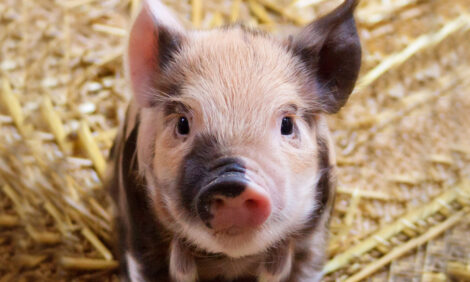



Republic of Korea - Livestock and Products - Semi-Annual 2009
In 2009, total pork imports by five per cent due to the economic situation and the depreciation of the Korean won against strong US dollar, according to this GAIN report from the USDA Foreign Agricultural Service. US pork imports will fall slightly this year due to the increased competition of US beef. Tough times may lie ahead for smaller farmers.Swine Production
Given the high swine prices at the time, it was originally expected that swine production would increase during 2008. However, high feed prices and the drop in the price of sows reversed that trend. The prices for fully grown sows peaked in August and then started to drop in September. When prices are dropping, farmers begin slaughtering in higher quantities. Also, unlike cattle that is fed with roughage and compound feed, swine are completely raised with compound feed. Feed prices continued increasing up to December 2008. It is estimated that over 1,000 farmers, unable to sustain the high production costs, gave up farming during the fourth quarter of 2008. This has caused sow inventory numbers to drop during the last quarter and production is now expected to decline slightly.
The government's vaccination program that began in May 2008 against major swine diseases, such as PRRS, will gradually increase the market piglets per sow per year in 2009 and as a result, despite the drop in sow numbers (9.1 per cent) in 2009, the piglet numbers are expected to drop at a slower rate (2.3 per cent).
In addition, the Korean government has recently announced that conglomerates will be able to purchase hog operations. In the past, this has not been allowed as it makes smaller farms less competitive. Since this announcement, smaller farms have been going out of business. It will be more difficult for the smaller, less competitive farms to pay the higher costs associated with environmental regulations and expected higher feed costs in 2009. The world corn price that hit the bottom in December 2008 has turned its nose upward in January 2009. Such increase in corn prices coupled by the depreciation of the won currency against US dollars will diffuse the hopes for lower feed prices in 2009, which will aggravate the small farmers' revenue and will push these farmers out of business.
Swine Slaughter
Swine slaughter was forecast to decrease but it is now expected that the decrease will be greater than anticipated given the lower production levels.
Pork Imports
In August 2008, it was expected that pork imports would increase. However, given the economic downturn, the depreciation of the Korean won, and the lack of credit available to importers, it is now forecast that imports will fall. Additionally, pork production in major supplying countries, such as the United States and the European Union, is expected to fall in 2009, which will lead to higher prices. Lastly, the country of origin labelling (COOL) requirement for pork went into effect on 22 December 2009 and this reduced the use of imported pork at restaurants.
Pork Exports
Efforts to eradicate the hog fever diseases in Jeju Island have been successful. The industry hopes to resume pork exports to Japan, which used to be the largest export market for Korean pork, during the second half of 2009.
Pork Consumption
Pork consumption is forecast to drop further than was originally expected. In some ways, 2008 has been an abnormal year for pork consumption. The controversy over US beef and the outbreak of avian influenza caused many consumers to switch to pork. This high demand kept pork prices high throughout 2008 and this is likely to continue in 2009 due to tight supplies. Pork will face increasing competition from other meats. For example, the price of domestic pork bellies, the most popular cut in Korea, is not much less than the price of imported frozen chuck roll or rib eye cuts and it is higher than the price of poultry. Unless there is another highly publicised issue, consumers will gradually shift to other meats.
Further Reading
| - | You can view the full report by clicking here. |






